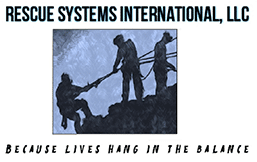SWIFT WATER RESCUE
Description
Classroom Based Learning Objectives:
- Introduction to Standard and terms
- PPE
- Hydrology
- Risk and Benefit
- Environmental Concerns
- Water craft types
- NFPA response model
- NIMS structure
In-Water Training Objectives:
- Personnel and group communication
- Site control
- Gaining comfort with swimming in rivers
- Self rescue and rescue priorities
- Throw bags and basic rope work
- Foot entrapment extrication
- Tethered swimmer (live bait)
- Contact swims
- Shallow water crossings
- Hazard avoidance and recognition
- Knots and anchors
- Anchor analysis
- Technical rope systems including mechanical advantage of 3:1, 5:1, 7:1
- Pig rig mechanical advantage systems
- Search and extraction techniques
- Overall emergency assessment and recognition dealing with swift water application
- Safety Set Layering
- Tension Diagonal as a safety tool
- Boat operations on rope systems
Experiential Learning Objectives:
- Skill set minimum personnel requirements
- Rehab period evaluation
- Cold water PPE limitations
- Forces involved in scene management tools and safety sets
- Challenges in Swift Water communications
- Scene assessment
Training Centers
What to Expect upon Arrival to Class
- You will be given a contact cell number for Course Lead
- You should expect to have a personal vehicle and that it may need to participate in shuttles to and from access points.
- Instructional staff will coordinate a community fund collected from students to pay for on-site lunches for the duration of the course. This is usually about $7.00 per man per day for cold cut lunches and staff will pack and restock as needed over duration of course.
- Wetsuits can be rented upon arrival but you need to make instructional staff aware upon booking course.
- Make staff aware of any medical needs specific to you prior to day one.





